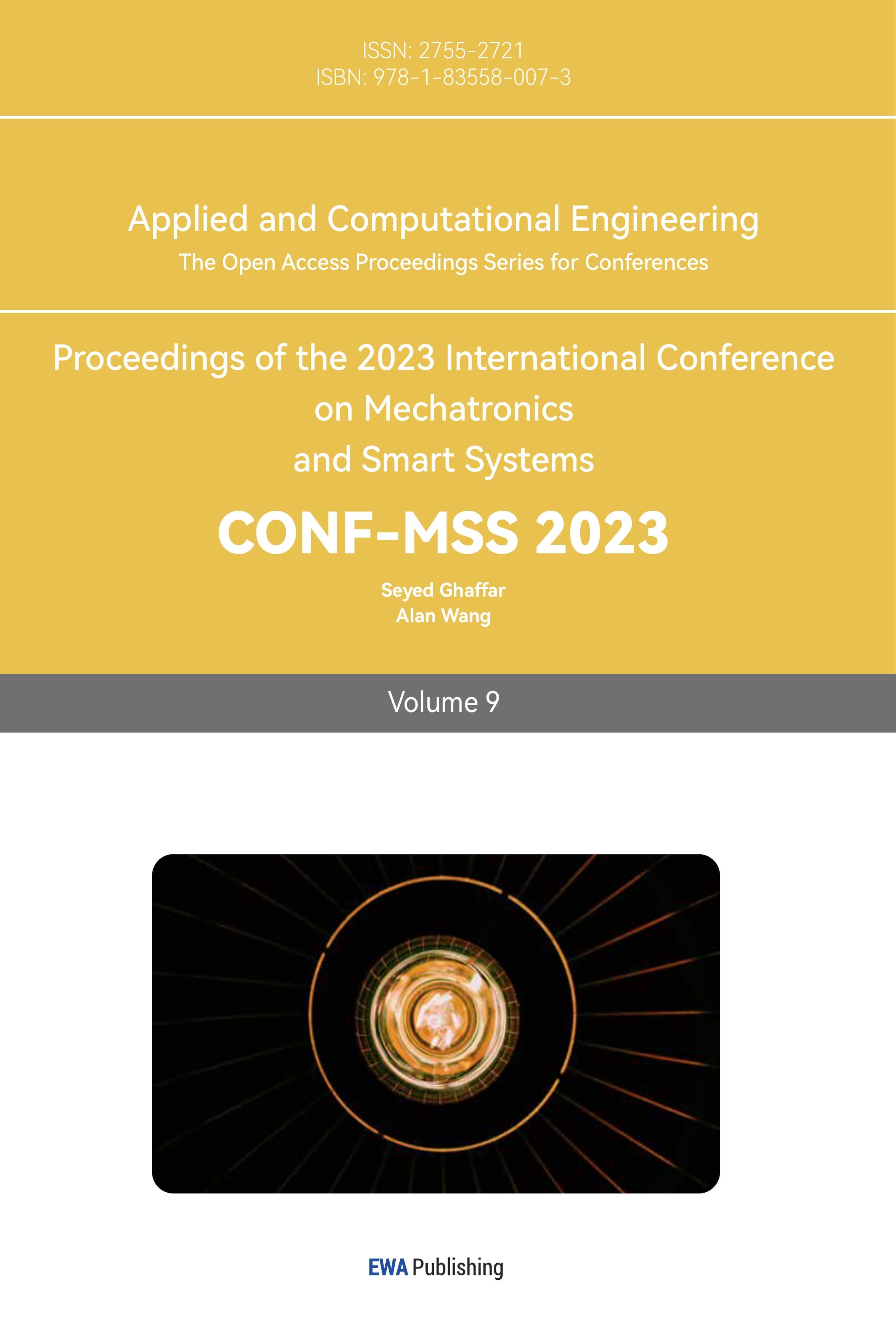1. Introduction
China's high-speed rail is a great initiative in the world. From the completion of the Beijing- Zhangjiakou Railway in 1909 to the opening of the Beijing-Zhangjiakou high-speed railway in 2019, China has not only achieved a qualitative leap from 35 km/h to 350 km/h, but also witnessed the great process of China's high-speed railway from independent research and construction to the world's top technology level. Currently, China's high-speed rail lines run through all parts of China, greatly improving people's living standards and quality of life.
Based on the importance of engineering cost, more and more people begin to pay attention to it. Project cost is not only to raise funds, the basis of the project investment plan, but also to adjust and distribute the industry. This paper mainly introduces several common factors that affect the construction cost of high-speed rail in China and compares them with other countries in specific fields. Nowadays, little consideration has been given to the analysis of the factors that affect the cost of building high-speed rail in China. This paper not only lists the construction costs of China's high-speed railways in recent years, but also considers the impact of regional differences, labor force and changes in technical standards on the construction costs of China's high-speed railways, and makes data comparison and analysis with that of the United States in terms of labor force. It uses the cases of Qinghai-Tibet Railway and Fuxing high-cold intelligent bullet trains to illustrate the impact of regional differences on construction costs, uses some data to illustrate the differences in labor costs between China and the United States, and uses flow charts to analyze the changes in technical standards. The listing and analysis of factors affecting the cost of high-speed railways can help the high-speed railway industry or other related manufacturing industries to clearly understand the degree of influence of various common factors on the construction cost, which can play a guiding significance for future construction.
2. Various construction costs of high-speed rail in China
Table 1 presents information about six Chinese railways supported by the World Bank, including maximum speed, type, length, total estimated cost and unit cost. The Shijiazhuang -- Zhengzhou railway line was the fastest at 350 km/h, leading to the highest unit cost of 12.3 billion yuan per kilometer. The Banghai-Guangzhou and Harbin Jiamusi railway lines use a combination of passenger and freight transport. The total estimated cost of the Guangzhou-Guangzhou railway line is the highest at 94.6 billion RMB, as it has the longest total length of 857 km [1].
Table 2 shows the construction cost ratio of different projects. Among them, the cost used in civil engineering accounts for about 50% of the total cost. The cost ratio of other projects is significantly lower than that of civil construction projects, accounting for a larger proportion of railway track expenses. Rolling stock costs on 200 km/h and 250 km/h lines are 5-7% and 3-4%, respectively, yet they account for a staggering 15% of 350 km/h lines. The remaining items account for a relatively low proportion, no more than 10% of the total cost [1].
Table 1. China railway project supported by The World Bank [1].
Railway Line | Max Speed (km/h) | Type | Length (Km) | Total Estimated Cost (Billion RMB) | Unit Cost (RMB million RMB/km) |
Shijiazhuang-Zhengzhou | 350 | PDL | 355 | 43.9 | 123 |
Guiyang-Guangzhou | 250 | PDL | 857 | 94.6 | 110 |
Jilin-Hunchun | 250 | PDL | 360 | 39.6 | 110 |
Zhangjiakou-Hohhot | 250 | PDL | 286 | 34.6 | 121 |
Nanning-Guangzhou | 200 | Mixed | 463 | 41.0 | 89 |
Harbin-Jiamusi | 200 | Mixed | 343 | 33.9 | 99 |
Note: PDL stands for pure passenger transport and Mixed stands for mixed passenger and freight transport
Table 2. The proportion of various construction costs in the total construction cost [1].
Factor | 200 km/h | 250 km/h | 350 km/h |
Civil engineering | 44-51 | 50-54 | 48 |
Track | 6-7 | 9-11 | 9 |
Signaling and communications | 4 | 3 | 4 |
Electrification | 4-5 | 4-5 | 5 |
Rolling stock | 5-7 | 3-4 | 15 |
Buildings including stations | 3-5 | 2-4 | 2 |
Land acquisition and resettlement | 6-9 | 4-8 | 4 |
3. The analysis of three critical factors affecting the project cost
This chapter will explain how regional differences, labor force costs and technical standard change affect the construction cost.
1.1 Regional differences
The cost of high-speed rail construction can be affected by different regions. The regional difference between east and west China mainly leads to the difference in landform; regional differences between north and south China mainly lead to differences in climate. The difference in terrain and climate will eventually be reflected in the cost of construction.
3.0.1. Regional differences between eastern and western China. The topography of eastern and western China is very different. Take the Qinghai-Tibet high-speed railway in western China, which connects Xining city in Qinghai province with Lhasa city in the Tibet Autonomous Region and opened to traffic on July 1, 2006. The Qinghai-Tibet line trend is shown in Fig.1. The Qinghai-Tibet Railway is built on the Qinghai-Tibet Plateau. The route from Xining to Lhasa is covered with mountains and desert, and it also needs to cross permafrost regions, making the construction conditions extremely difficult. In order to solve the problem of permafrost roadbed deformation due to temperature changes, it is necessary to build a ventilation system and comprehensive drainage system under the roadbed and to use insulation facilities such as insulation boards. And the construction of these systems and facilities can have a significant impact on cost. In addition, in order to reduce various resistance and allow the high-speed rail to run smoothly, it is necessary to weld the already-built welded rail into a seamless rail. For this reason, China designed, invested and built the welding rail car of plateau air pressure to realize the welding of long rail and paving job [2]. Similarly, construction costs are affected by such modern products using advanced technology.
The eastern part of China is dominated by hills and plains. Hilly areas include Shandong hills, Liaoning hills and southern low hills, etc. Plain areas include the middle and lower reaches of the Yangtze River plain and Huang-Huai-hai Plain, etc., so it is easy to build high-speed rail lines in the western part of the country without spending money on ventilation and drainage systems or products with special functions. Therefore, the construction cost is different due to the difference of terrain conditions in the east and the west.
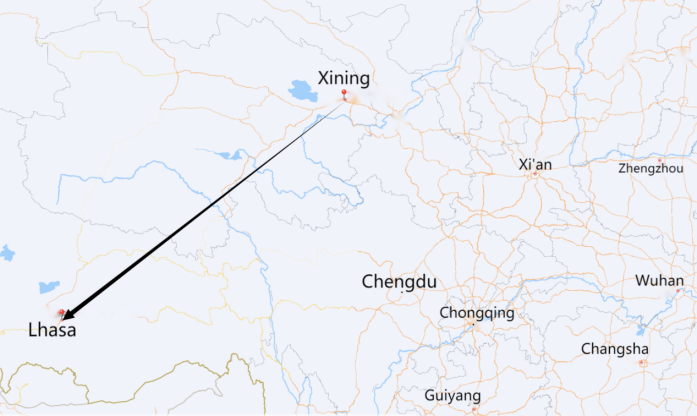
Figure 1. Qinghai-Tibet line trend chart.
3.0.2. Regional differences between Southern and northern China. Regional differences lead to distinct climatic conditions in the north and south. On Feb 19, China's self-developed CR400BF-GZ type Fuxing high-cold intelligent bullet train ran for a month in Heilongjiang province, according to China State Railway Group Co LTD. It is the first time that a 350 km/h Fuxing bullet train has been put into service in China's highest latitude region. So far, the railway has covered a total of 112,474 kilometers. The high-speed railway connects Harbin in Heilongjiang province and Huaihua in Hunan province. The CR400BF-GZ type Fuxing high-cold high-speed rail trend is shown in Fig.2. In the starting section of the high-speed railway, the climate is extremely cold and dry, so the materials and accessories of the high-speed railway as well as the maintenance work in the later stage appear very important, which will certainly have a certain impact on the construction cost. First of all, the low-temperature resistance design was carried out for the body materials, electrical components, wind brake and other system components of the new high-cold high-speed railway. In addition, heating and insulation facilities were added to the water pipes and water tanks under the car. These anti-freezing facilities increased the cost of the project to some extent. In addition, in the water system frost prevention, condensate prevention and other aspects of frost resistance upgrade [3]. Therefore, for the high-speed railway lines in northern China, the opening and later maintenance of the lines will have a great impact on the project cost.
In southern China, the population density is large and the climate is warm and humid, so it is not necessary to consider the anti-freezing accessories or insulation facilities required because of the cold climate in the north. Therefore, the construction cost will vary due to the difference in climate between the north and the south.
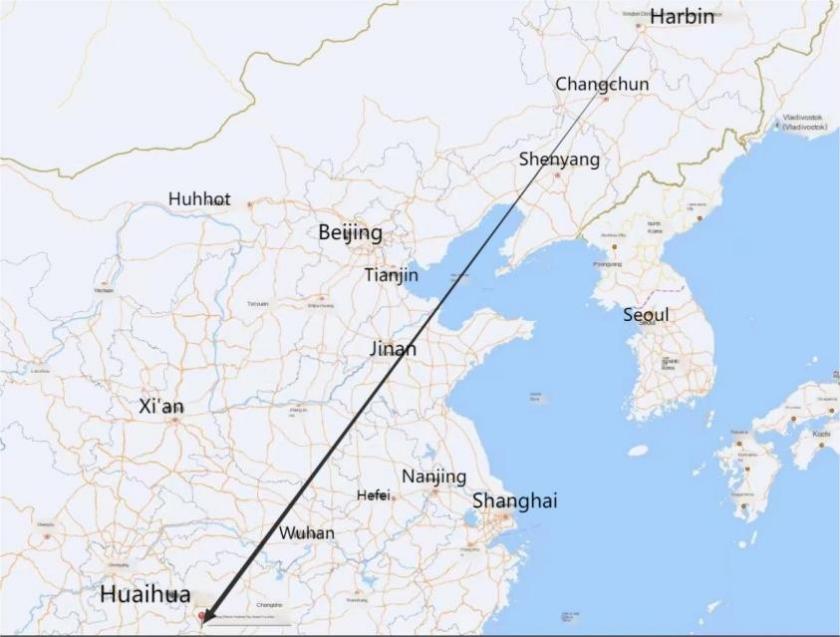
Figure 2. CR400BF-GZ type Fuxing high-cold high-speed rail trend chart.
1.2 Labor force cost
From 1990 to 2015, the average annual wage in China's manufacturing industry increased from 2,073 yuan to 55,324 yuan. During that 16-year period, labor costs rose nearly 27-fold. During that time, the average annual manufacturing wage in the United States rose from $28,173 to $55,292, while labor costs only increased by 1.96 times [4]. While this reflects a narrowing gap in manufacturing costs between China and the United States, labor costs in the United States are still much higher than in China. This means that China pays its workers less than the United States.
Fig 3 shows the salary of the non-private construction sector in urban China from 2014 to 2022. As shown in Fig.4, the total unit labor cost of the manufacturing industry in the United States from 2013 to 2022 presents a rising trend. First, the United States is highly mechanized, making labor very valuable. Secondly, taxes for citizens in the United States are relatively low. These two factors are the main causes of higher labor costs in the United States. In 2015, for example, the average annual wage in China's manufacturing industry was 55,324 yuan; The average annual salary in the United States is $55,292 [4], about seven times higher than that in China. In China, the social labor resources are relatively rich on the whole, the domestic market has broad prospects, and some independently developed high technologies have international competitiveness advantages, so China's labor force is relatively cheap compared with the United States.
To sum up, labor cost is also an important factor affecting project costs.
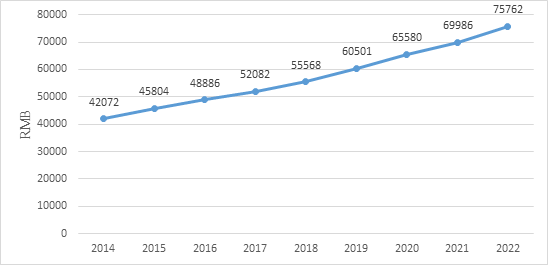
Figure 3. Average wages in the construction industry of non-private units in urban China.
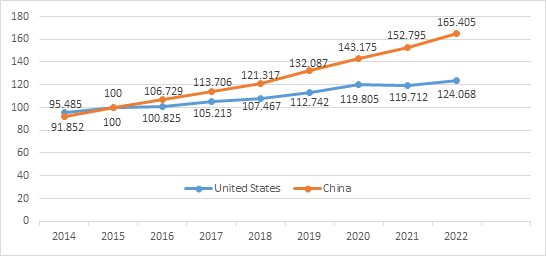
Figure 4. Total unit labor cost in United States and China [4-5].
Note: Units: Index 2015=100
1.3 Technical standard change
With the continuous development of the social economy, the continuous improvement and improvement of science and the technology, the technical standards have changed accordingly. Changes in technological development have led to certain differences between the design specifications, construction specifications, acceptance standards, construction equipment and other factors of Chinese railways [6].
3.0.3. Design specification. The Design Specification for High-speed Railway (TB10621 -- 2014) and the Design Specification for Intercity Railway (TB10623 -- 2014) were released at the end of 2014, The code stipulates in principle the scope of application, design year, building limit, design live load, selection of main technical standards, comprehensive line selection, system design, etc. [6]. As shown in figure 5, the difference in design specification mainly started from the design standard represented by the plane section design of the line, the structural form represented by the type of bridge, the functional range represented by the electronic telecontrol, the project scale represented by the station building scale and the layout requirements represented by the disaster monitoring system, and then reflected in the project cost in the form of the number of projects.

Figure 5. Schematic diagram of influencing factors in design specification.
3.0.4. Construction specification. Starting from the construction technology requirements represented by shotcrete technology, construction measurement and detection requirements represented by elevation measurement level, construction technical standards represented by paved roads, construction accuracy requirements represented by relative point position accuracy and construction content range represented by the construction of attached structures. And then reflected in the form of project quantity and construction measures on the project cost (as shown in figure 6).

Figure 6. Schematic diagram of influencing factors in construction specification.
3.0.5. Acceptance criteria. Starting from the selection of adaptation specifications represented by the different provisions of the specification, the quality acceptance organization represented by the monitoring frequency, the quality acceptance content represented by the content of electric traction, and the quality acceptance requirements represented by the compaction standard of the foundation bed surface and the transition section, the project cost is reflected in the form of project quantity and construction measures(as shown in figure 7).

Figure 7. Schematic diagram of influencing factors in acceptance criteria.
3.0.6. Construction equipment. Starting from the use of materials represented by material supply, storage, pipe and shipment, the mechanical configuration represented by the complete set of tunnel construction technologies, the manual input represented by the project personnel configuration, the supporting cost represented by the tunnel concrete transportation cost, and the other requirements represented by the project perception, the project cost is reflected in the form of project quantity and construction measures(as shown in figure 8).

Figure 8. Schematic diagram of influencing factors in construction equipment.
3.0.7. Other factors. Starting from the labor cost represented by the proportion of senior workers, the material cost represented by the main material requirements, the construction period difference represented by the design and site differences, natural disasters represented objective factors, thus causing a certain impact on the project cost (as shown in figure 9).

Figure 9. Schematic diagram of influencing factors in other factors.
4. Conclusion
This paper not only lists various construction costs of the high-speed rail under the background of the rapid development of high-speed rail, but discusses three main factors that affect the construction cost of high-speed railway in China, and concludes that the severe terrain in western China and the extremely cold weather in northern China will increase the construction cost of railway, the relatively low labor cost in China can reduce the construction cost, and the change of several technical standards will also have an impact on the construction cost.
The shortcoming of this paper is that it does not list specific data for analysis in terms of regional and technical standard differences.
In the future, data from specific project cases will be used in these two aspects to explore how land price affects the project cost of high-speed rail and how the design speed of high-speed rail leads to the difference in cost.
References
[1]. Gerald Ollivier, Jitendra Sondhi and Nanyan Zhou.High-Speed Railways in China:A Look at Construction Costs.2014, https://openknowledge.worldbank.org/server/api/core/bitstreams/29e19da8-1a38-5fb1-acef-f247aa0b9669/content
[2]. Leng Qiufa.(2017). The huge project and technological innovation of Qinghai-Tibet Railwa-y construction. Speed caps and Speed Regulation Technology (01),4-7+11.
[3]. People.cn. Fuxing family's most "anti-freezing" high-cold intelligent bullet train online oper-ation full moon. February 21, 2023 14:30, http://finance.people.com.cn/n1/2023/0221/c1004-32628257.html
[4]. Total Unit Labor Cost:Manufacturing for the United States(LCULMN01USQ661S). Update-d:Jan 13,2023. https://fred.stlouisfed.org/series/LCULMN01USQ661S
[5]. National Bureau of Statistics.Average wage in China: Urban non-private sector: Cumulative: Construction.2007-2021, https://www.ceicdata.com/zh-hans/china/average-wage-by-industr-y-urban-nonprivate/average-wage-urban-nonprivate-ytd-construction
[6]. Gao Yuhong.(2020). Study on the influence of technical standard change on railway engine-ering cost. Journal of Railway Science and Engineering (09),2437-2444. doi:10.19713/j.cnki.43-1423/u.t20200450.
Cite this article
Li,S. (2023). Factors influencing the construction cost of high-speed rail in China and comparative analysis with other countries. Applied and Computational Engineering,9,27-33.
Data availability
The datasets used and/or analyzed during the current study will be available from the authors upon reasonable request.
Disclaimer/Publisher's Note
The statements, opinions and data contained in all publications are solely those of the individual author(s) and contributor(s) and not of EWA Publishing and/or the editor(s). EWA Publishing and/or the editor(s) disclaim responsibility for any injury to people or property resulting from any ideas, methods, instructions or products referred to in the content.
About volume
Volume title: Proceedings of the 2023 International Conference on Mechatronics and Smart Systems
© 2024 by the author(s). Licensee EWA Publishing, Oxford, UK. This article is an open access article distributed under the terms and
conditions of the Creative Commons Attribution (CC BY) license. Authors who
publish this series agree to the following terms:
1. Authors retain copyright and grant the series right of first publication with the work simultaneously licensed under a Creative Commons
Attribution License that allows others to share the work with an acknowledgment of the work's authorship and initial publication in this
series.
2. Authors are able to enter into separate, additional contractual arrangements for the non-exclusive distribution of the series's published
version of the work (e.g., post it to an institutional repository or publish it in a book), with an acknowledgment of its initial
publication in this series.
3. Authors are permitted and encouraged to post their work online (e.g., in institutional repositories or on their website) prior to and
during the submission process, as it can lead to productive exchanges, as well as earlier and greater citation of published work (See
Open access policy for details).
References
[1]. Gerald Ollivier, Jitendra Sondhi and Nanyan Zhou.High-Speed Railways in China:A Look at Construction Costs.2014, https://openknowledge.worldbank.org/server/api/core/bitstreams/29e19da8-1a38-5fb1-acef-f247aa0b9669/content
[2]. Leng Qiufa.(2017). The huge project and technological innovation of Qinghai-Tibet Railwa-y construction. Speed caps and Speed Regulation Technology (01),4-7+11.
[3]. People.cn. Fuxing family's most "anti-freezing" high-cold intelligent bullet train online oper-ation full moon. February 21, 2023 14:30, http://finance.people.com.cn/n1/2023/0221/c1004-32628257.html
[4]. Total Unit Labor Cost:Manufacturing for the United States(LCULMN01USQ661S). Update-d:Jan 13,2023. https://fred.stlouisfed.org/series/LCULMN01USQ661S
[5]. National Bureau of Statistics.Average wage in China: Urban non-private sector: Cumulative: Construction.2007-2021, https://www.ceicdata.com/zh-hans/china/average-wage-by-industr-y-urban-nonprivate/average-wage-urban-nonprivate-ytd-construction
[6]. Gao Yuhong.(2020). Study on the influence of technical standard change on railway engine-ering cost. Journal of Railway Science and Engineering (09),2437-2444. doi:10.19713/j.cnki.43-1423/u.t20200450.





